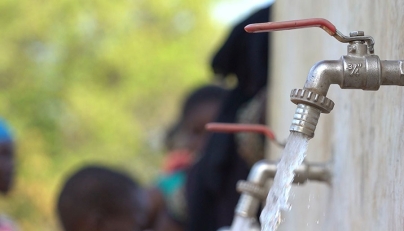Health
Over Two Billion People Lack Access to Safe Drinking Water

The United Nations revealed on March 15, 2024, that over two billion people worldwide, representing approximately a quarter of the global population, do not have access to safely managed drinking water. This alarming statistic highlights the slow progress toward achieving universal access to this essential service.
According to a joint report from the World Health Organization (WHO) and the United Nations Children’s Fund (UNICEF), one in four individuals globally was without access to safely managed drinking water as of last year. The report indicates that more than 100 million people are relying on surface water sources, such as rivers, ponds, and canals, which are often contaminated.
Urgent Need for Action
The lack of adequate water, sanitation, and hygiene services significantly increases the risk of diseases for billions of people. The WHO and UNICEF noted that achieving universal coverage of these essential services by 2030 is becoming increasingly challenging.
Rudiger Krech, Director of Environment at WHO, emphasized that water, sanitation, and hygiene are fundamental human rights rather than privileges. He called for immediate action to accelerate progress, especially for the most marginalized communities who are disproportionately affected.
The report indicates that since 2015, approximately 961 million people have gained access to safely managed drinking water services, increasing coverage from 68 percent to 74 percent. Despite this progress, 2.1 billion people remained without these services last year, with 106 million still dependent on surface water sources, although this number has decreased by 61 million over the past decade.
Improving Access Worldwide
The number of countries that have eliminated the use of surface water as a drinking source has risen significantly, from 142 in 2015 to 154 in 2024. In 2024, 89 countries achieved universal access to at least basic drinking water services, with 31 countries reaching universal access to safely managed drinking water services.
Despite these advancements, there are still 28 countries where more than a quarter of the population lacks basic drinking water services, primarily concentrated in Africa. This highlights the urgent need for targeted interventions in these regions.
The report categorizes drinking water services into five levels, defining safely managed drinking water as water that is accessible on-site, available when needed, and free from fecal and hazardous chemical contamination. This definition underscores the critical requirements for ensuring that all individuals have access to clean and safe drinking water.
As global efforts continue, the findings serve as a stark reminder of the ongoing challenges and the necessity for collaborative action to address this pressing issue. The international community must prioritize initiatives aimed at improving access to safe drinking water to safeguard public health and well-being.
-

 World1 week ago
World1 week agoPrivate Funeral Held for Dean Field and His Three Children
-

 Top Stories2 weeks ago
Top Stories2 weeks agoFuneral Planned for Field Siblings After Tragic House Fire
-

 Sports3 months ago
Sports3 months agoNetball New Zealand Stands Down Dame Noeline Taurua for Series
-

 Entertainment3 months ago
Entertainment3 months agoTributes Pour In for Lachlan Rofe, Reality Star, Dead at 47
-

 Entertainment2 months ago
Entertainment2 months agoNew ‘Maverick’ Chaser Joins Beat the Chasers Season Finale
-

 Sports3 months ago
Sports3 months agoSilver Ferns Legend Laura Langman Criticizes Team’s Attitude
-

 Sports1 month ago
Sports1 month agoEli Katoa Rushed to Hospital After Sideline Incident During Match
-

 World2 weeks ago
World2 weeks agoInvestigation Underway in Tragic Sanson House Fire Involving Family
-

 Politics2 months ago
Politics2 months agoNetball NZ Calls for Respect Amid Dame Taurua’s Standoff
-

 Top Stories2 weeks ago
Top Stories2 weeks agoShock and Grief Follow Tragic Family Deaths in New Zealand
-

 Entertainment3 months ago
Entertainment3 months agoKhloe Kardashian Embraces Innovative Stem Cell Therapy in Mexico
-

 World4 months ago
World4 months agoPolice Arrest Multiple Individuals During Funeral for Zain Taikato-Fox





















